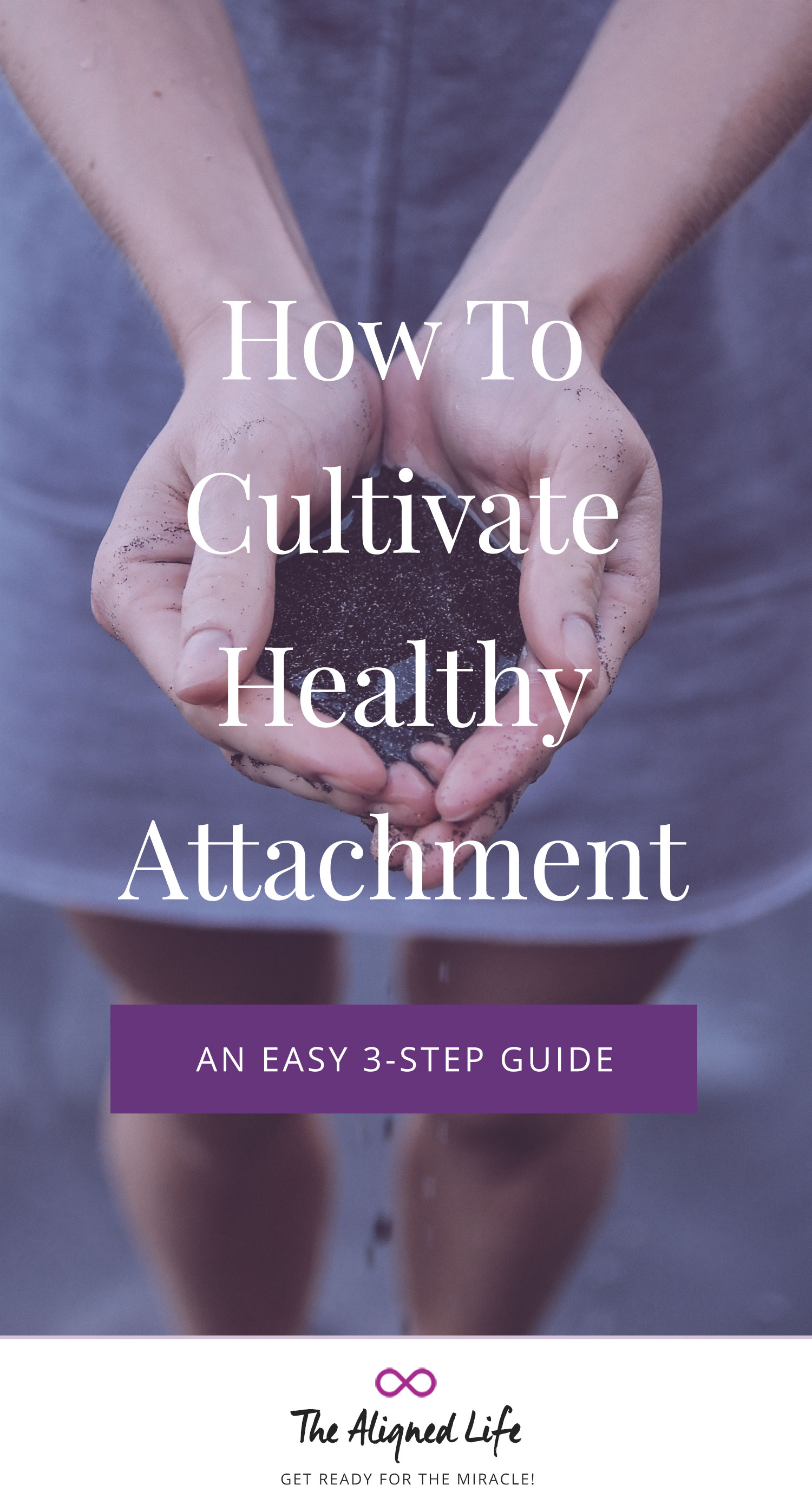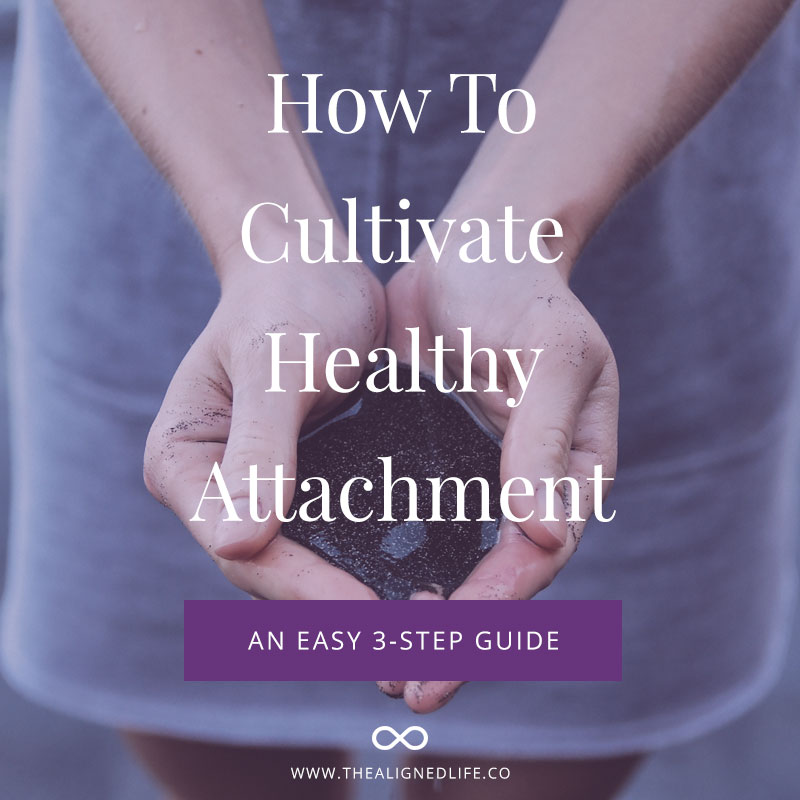How To Cultivate Healthy Attachment: A 3-Step Guide
Wondering how to cultivate healthy attachment to people, places or things?
There’s frequently comes a question in spiritual circles about how a supposedly-spiritual person can enjoy material possessions.
After all, aren’t we supposed to rise above all of that? In many religions, poverty is seen as an admirable state. And it’s true that lessening our attachment to physical belongings can make us happier, it’s not poverty itself that makes us more spiritual. It’s our mindset.
So yes, of course, the two can coexist.
And no, I’m not just saying that because I’m a designer.
It’s learning to inhabit both of those spaces at the same time.
While relying too much on the external world is not healthy, we’re still physical beings having a physical experience. Part of the joy of being human is enjoying our physical state, through taste, movement, touch etc.
A balanced approach to spirituality takes your humanity into account.
We’re all searching for fulfillment and it’s easy to confuse the rush of shopping or consuming with being truly fulfilled. But sooner or later, the truth becomes evident.
Filling that inner need with superficialities does nothing to sustain us through the long-term. Short-term pleasure does not guarantee long-term satisfaction.
We can’t ever get true happiness from our stuff. But we can create a deep and satisfying experience to the world through the way we relate to our stuff.
Creating healthy attachment is about coming from a place of contentment and respect, not from being ruled by gluttony, greed or fear.
I love to start attachment practice at home, because that’s where we spend most of our time (and it’s my favorite medium in general).
But moving into a sense of healthy attachment and away from a place of intense need is a practice that has far-reaching effects.
There’s a quote that I love that says “how you do one thing is how you do everything”. (Which is quite a sobering thought!)
Getting too attached to something just isn’t healthy, whether it’s on something we own or someone we love.
Think of this habit of healthy attachment as much more than just a way you relate to your stuff. It’s a way to see the entire world.
Having respect for our belongings is not just having dominion over them. It’s about treating them with loving care. But also staying mindful of their impermanence. Our shoes and clothes will wear out one day. What’s in fashion this year will be out next year. Our appliances might break down. These things are destined to ebb and flow. But we can value them and cherish them while they happen to occupy space in our life.
Cultivating healthy attachment means understanding that we cannot find true happiness from our stuff yet still allowing space for respect and enjoyment.
If you’re interested in creating healthy boundaries with your belongings, I’ve put together this quick guide to help out.
How To Cultivate Healthy Attachment: A 3-Step Guide
Cultivate Healthy Attachment Step 1: Gratitude
Society sets us up to feel lack in so many ways. Just take a look at the media, advertising or even your local grocery store! Advertising and marketing work by making you feel like you’re missing something. They operate on making you feel lacking. We’re all susceptible but some of us feel it more than others. So if you’re affected by this conditioning, the best way to combat it is by working on your attitude for gratitude.
Gratitude is one of the true keys to happiness. To put it simply, when we feel grateful for something it’s impossible to feel lack at the same time. They’re like two sides of the same coin. So when you feel the dark pull of desire from a place of lack, try to put your focus on what you do have instead. It’ll automatically shift your thinking.
Cultivate Healthy Attachment Step 2: Lower Your Consumption
Limiting your consumption works best by limiting your exposure. So stay out of the mall and you’ll fall prey to passing design trends a lot less often! But the mall isn’t everyone’s drug. Take a look at your habits. What do you buy too much of? What’s the most tempting for you? There’s a world of difference between our wants and needs. And it’s incredibly liberating to find out how things don’t really change that much if you don’t upgrade to the latest iPhone. (Really!)
Tim Ferriss takes this concept to the extreme by “practicing poverty” regularly. For just a week this year act like you don’t have money. Don’t go out for drinks or food. Don’t got shopping. Stay home and live simple. This stoic practice is a great way to remember how many of our daily choices are luxuries, not necessities.
The practice has another underlying bonus however: reducing fear. If we’re afraid of making decisions that might lose use money, living the poor lifestyle is confronting us directly with that fear. And will help us to see that things really aren’t that bad, even if we did lose “everything”.
Cultivate Healthy Attachment Step 3: Release Attachment
Buddhism teaches that attachment is the root of all suffering. It’s pretty easy to see how this plays out in different ways: our expectations of our relationships are often what hurts us the most. The way we cling to one specific desire is what breaks our heart, not the actual events in our life. When we think our stuff will actually improve us or make us happier, we set ourselves up to fail. When we think we can’t be happy unless we have the same things that our friends do, we’re creating the mental trap for ourselves.
Of course, working on becoming free of these attachments is an ongoing process. But when you find yourself faced with disappointment or jealousy, take a closer look at how your own thoughts had an effect on the situation. (If you want to take this a step further, check out The Work by the brilliant Byron Katie.)
It is absolutely possible to live in the material world without falling into anger, fear, greed or jealousy. It just takes a shift in your mindset. So focus instead on the wonder of physical things themselves (they all began inside someone’s head). Focus on giving gifts as a concrete expression of affection. Focus on spending your money on people and businesses that deserve it. Focus on facilitating great experiences in this world for yourself, in whatever meaningful way that is for you.
I hope you enjoy this practice!

PS Looking for more? You might also want to check out this post about how to change your life the easy way or this one about how to feel abundant when you’re broke.
Pin It:

- Seeing 222 Everywhere? The Meaning of Angel Number 222 - April 16, 2024
- 10+ Spiritual Shows To Watch On Netflix - April 9, 2024
- Sacral Authority Type | Human Design Explained - April 8, 2024

